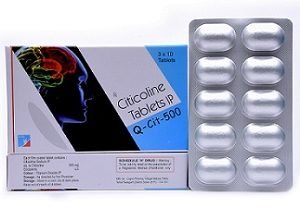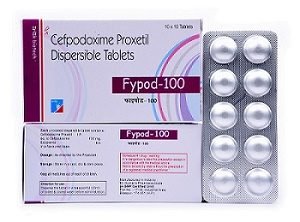Description
PHARMACOLOGY
PHARMACODYNAMICS OF ACECLOFENAC
MECHANISM OF ACTION:
It inhibits cyclo-oxygenase (COX) activity and to suppress the PGE2 production by inflammatory cells, by inhibiting IL-Beta & TNF in the inflammatory cells (Intracellular Action).
It blocks degeneration and stimulates synthesis of extra cellular matrix of cartilages by inhibiting the action of different cytokines.
Drug and its metabolites inhibit IL-6 production by human chondrocytes. This leads to inhibition of increase of inflammatory cells in synovial tissue, inhibition of IL-1 amplification, inhibition of increased MMP synthesis and thus ensuring proteoglycan production.
It inhibits IL-1 and TNF production by human chondrocytes, inflammatory cells and synovial cells and therefore blocks suppression of GAG and collagen synthesis and stimulates growth factors mediated synthesis of GAG and collagen.
4`-hydroxyaceclofenac a metabolite of aceclofenac inhibits pro MMP1 and pro MMP3 produced by synovial cells (Rheumatoid Synovial Cells) in serum and in synovial fluid and thus inhibits progressive joint destruction by MMPs.
Aceclofenac inhibits Neutrophils Adhesion & Accumulation at the inflammatory site in the early phase and thus blocks the pro-inflammatory actions of Neutrophils.
Aceclofenac is also an NSAID with greater COX-2 specificity.
PHARMACOKINETICS OF ACECLOFENAC
- Absorption- It is rapidly and completely absorbed after oral administration.
- Distribution- Widely distributed in the body as protein-bound form. It is highly protein-bound (>99.7%). Aceclofenac penetrates into the synovial fluid, where the concentrations reach approximately 60% of those in plasma.
- Metabolism- Metabolized into metabolites in the liver. Main metabolite is 4-hydroxyaceclofenac.
- Excretion- It is excreted through urine mainly as conjugated hydroxymetabolites.
PARACETAMOL
PHARMACODYNAMICS OF PARACETAMOL
MECHANISM OF ACTION:
Paracetamol has analgesic and antipyretic action. It is more active on cyclo-oxygenase enzyme in brain. Peripherally it is a poor inhibitor of prostaglandin synthesis.
Analgesic action: Paracetamol raises the pain threshold and produces analgesic effect.
Antipyretic action: Paracetamol lowers fever by direct action on the thermoregulatory centre in the Hypothalamus and block the effects of endogenous pyrogen.
PHARMACOKINETICS OF ACECLOFENAC
Absorption: Paracetamol is rapidly and completely absorbed after oral administration.
Distribution: It is distributed mostly in the body in unbound form.
Metabolism: It is extensively metabolized in the liver.
Excretion: Excreted in the urine
CHLORZOXAZONE
PHARMACODYNAMICS OF CHLORZOXAZONE
MECHANISM OF ACTION: –
This muscle relaxant works by blocking nerve impulses (or pain sensations) that are sent to your brain. It inhibits degranulation of mast cells, subsequently preventing the release of histamine and slow-reacting substance of anaphylaxis (SRS-A), mediators of type I allergic reactions. It may also reduce the release of inflammatory leukotriene. Chlorzoxazone may act by inhibiting calcium influx.
PHARMACOKINETICS OF CHLORZOXAZONE
Absorption- Rapidly and completely absorbed after oral administration.
Distribution- Widely distributed in the body.
Metabolism- It is metabolized in the liver to its metabolites by glucoronide conjugation.
Excretion- It is excreted through urine.
INDICATIONS:
- ACECLOFENAC
- Ankylosing spondylitis
- Osteoarthritis
- Symptomatic treatment of pain and inflammation in Post-Traumatic pain
- Cervical pain
- Low back pain
- Acute gout
- PARACETAMOL:
- To relieve pain and fever
- Acute gout
- Migraine
CHLORZOXAZONE:
Painful skeletal muscle spasms













